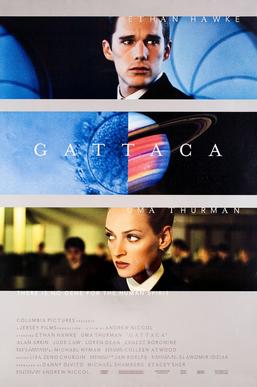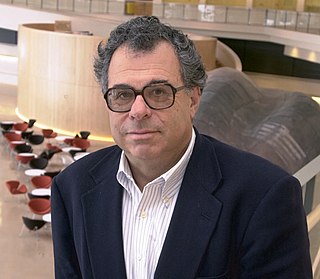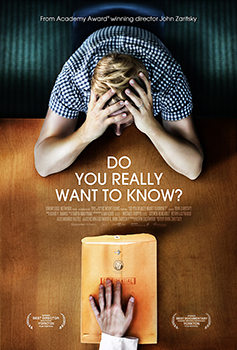
Eugenics is a set of beliefs and practices that aim to improve the genetic quality of a human population. Historically, eugenicists have attempted to alter the frequency of various human phenotypes by inhibiting the fertility of people and groups they considered inferior, or promoting that of those considered superior.

Francis Harry Compton Crick was an English molecular biologist, biophysicist, and neuroscientist. He, James Watson, Rosalind Franklin, and Maurice Wilkins played crucial roles in deciphering the helical structure of the DNA molecule.

James Dewey Watson is an American molecular biologist, geneticist, and zoologist. In 1953, he co-authored with Francis Crick the academic paper in Nature proposing the double helix structure of the DNA molecule. Watson, Crick and Maurice Wilkins were awarded the 1962 Nobel Prize in Physiology or Medicine "for their discoveries concerning the molecular structure of nucleic acids and its significance for information transfer in living material".

Gattaca is a 1997 American dystopian science fiction film written and directed by Andrew Niccol in his feature directorial debut. It stars Ethan Hawke and Uma Thurman with Jude Law, Loren Dean, Ernest Borgnine, Gore Vidal, and Alan Arkin appearing in supporting roles. The film presents a future society driven by eugenics where children are conceived through genetic selection to ensure they possess the best hereditary traits of their parents. The film centers on Vincent Freeman, played by Hawke, who was conceived outside the eugenics program and struggles to overcome genetic discrimination to realize his dream of going into space.

Huntington's disease (HD), also known as Huntington's chorea, is an incurable neurodegenerative disease that is mostly inherited. The earliest symptoms are often subtle problems with mood or mental/psychiatric abilities. A general lack of coordination and an unsteady gait often follow. It is also a basal ganglia disease causing a hyperkinetic movement disorder known as chorea. As the disease advances, uncoordinated, involuntary body movements of chorea become more apparent. Physical abilities gradually worsen until coordinated movement becomes difficult and the person is unable to talk. Mental abilities generally decline into dementia, depression, apathy, and impulsivity at times. The specific symptoms vary somewhat between people. Symptoms usually begin between 30 and 50 years of age, and can start at any age but are usually seen around the age of 40. The disease may develop earlier in each successive generation. About eight percent of cases start before the age of 20 years, and are known as juvenile HD, which typically present with the slow movement symptoms of Parkinson's disease rather than those of chorea.

Hermann Joseph Muller was an American geneticist who was awarded the 1946 Nobel Prize in Physiology or Medicine, "for the discovery that mutations can be induced by X-rays". Muller warned of long-term dangers of radioactive fallout from nuclear war and nuclear testing, which resulted in greater public scrutiny of these practices.

Cold Spring Harbor Laboratory (CSHL) is a private, non-profit institution with research programs focusing on cancer, neuroscience, plant biology, genomics, and quantitative biology. It is located in Laurel Hollow on Long Island, New York.

Joshua Lederberg was an American molecular biologist known for his work in microbial genetics, artificial intelligence, and the United States space program. He was 33 years old when he won the 1958 Nobel Prize in Physiology or Medicine for discovering that bacteria can mate and exchange genes. He shared the prize with Edward Tatum and George Beadle, who won for their work with genetics.

Genome: The Autobiography of a Species in 23 Chapters is a 1999 popular science book by the science writer Matt Ridley, published by Fourth Estate. The chapters are numbered for the pairs of human chromosomes, one pair being the X and Y sex chromosomes, so the numbering goes up to 22 with Chapter X and Y couched between Chapters 7 and 8.

The term racial hygiene was used to describe an approach to eugenics in the early 20th century, which found its most extensive implementation in Nazi Germany. It was marked by efforts to avoid miscegenation, analogous to an animal breeder seeking purebred animals. This was often motivated by the belief in the existence of a racial hierarchy and the related fear that "lower races" would "contaminate" a "higher" one. As with most eugenicists at the time, racial hygienists believed that the lack of eugenics would lead to rapid social degeneration, the decline of civilization by the spread of inferior characteristics.

David Botstein is an American biologist who is the chief scientific officer of Calico. He was the director of the Lewis-Sigler Institute for Integrative Genomics at Princeton University from 2003 to 2013, where he remains an Anthony B. Evnin Professor of Genomics.
Huntington's disease (HD) has been shown in numerous formats, more so as awareness of the condition has increased. Here is a list of references to it in popular culture;

Nancy Wexler FRCP is an American geneticist and the Higgins Professor of Neuropsychology in the Departments of Neurology and Psychiatry of the Columbia University College of Physicians and Surgeons, best known for her involvement in the discovery of the location of the gene that causes Huntington's disease. She earned a Ph.D. in clinical psychology but instead chose to work in the field of genetics.

Charles Edward Sabine is a British television journalist who worked for the US Network NBC News for twenty-six years, before becoming a global spokesman for patients and families with degenerative brain diseases. He is active throughout advocacy and charity sectors across four continents and founder of the Hidden No More Foundation. He has 2 children, Roman and Sabrina.
The Centre for Molecular Medicine and Therapeutics (CMMT) is part of the University of British Columbia's Faculty of Medicine. The Centre is located at the British Columbia Children's Hospital Research Institute (BCCHR) in Vancouver, British Columbia, Canada. Research at CMMT is focused on discovering genetic susceptibility to illnesses such as Huntington Disease, Type 2 diabetes and bipolar disorder.

Michael R. Hayden, is a Killam Professor of Medical Genetics at the University of British Columbia, the highest honour UBC can confer on any faculty member. Only four such awards have ever been conferred in the Faculty of Medicine. Dr. Hayden is also Canada Research Chair in Human Genetics and Molecular Medicine. Hayden is best known for his research in Huntington disease (HD).

Jeffrey Bryan Carroll is an American scientific researcher in the field of Huntington's disease (HD). As a carrier of the abnormal gene that causes HD, he is also a public advocate for families affected by the disease, and co-founder of the HD research news platform HDBuzz. His life and work were the subject of a 2011 Gemini award-nominated CBC documentary feature. Carroll is an associate professor of neuroscience in the Department of Biology at the University of Washington

Do You Really Want to Know? is a 2012 documentary film directed by John Zaritsky and produced by Kevin Eastwood. Using interviews and dramatic recreations, the film recounts the stories of three families who carry the gene for Huntington's disease, a neurodegenerative illness which is the result of a genetic abnormality, whose symptoms typically appear in mid-life. Members of each featured family have undergone predictive testing to learn whether or not they have inherited the gene that causes the disease, and they each describe the impact that testing has had upon their lives. Do You Really Want to Know? had its world premiere in Canada at the 2012 DOXA Documentary Film Festival and its broadcast premiere on November 13, 2012 on Knowledge Network.

The Gene: An Intimate History is a book written by Siddhartha Mukherjee, an Indian-born American physician and oncologist. It was published on 17 May 2016 by Scribner. The book chronicles the history of the gene and genetic research, all the way from Aristotle to Crick, Watson and Franklin and then the 21st century scientists who mapped the human genome. The book discusses the power of genetics in determining people's well-being and traits. It delves into the personal genetic history of Siddhartha Mukherjee's family, including mental illness. However, it is also a cautionary message toward not letting genetic predispositions define a person or their fate, a mentality that the author says led to the rise of eugenics in history.

Aspects of genetics including mutation, hybridisation, cloning, genetic engineering, and eugenics have appeared in fiction since the 19th century.


















